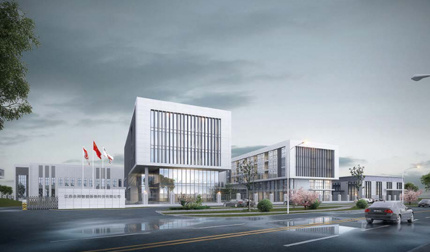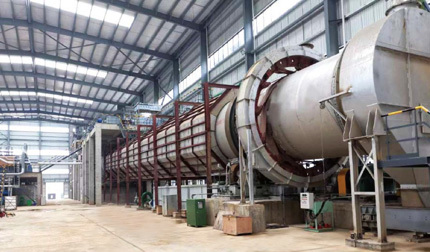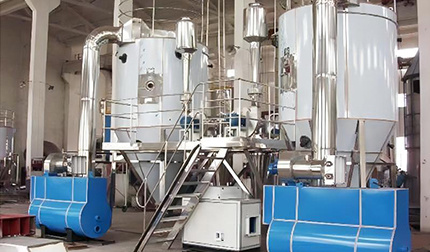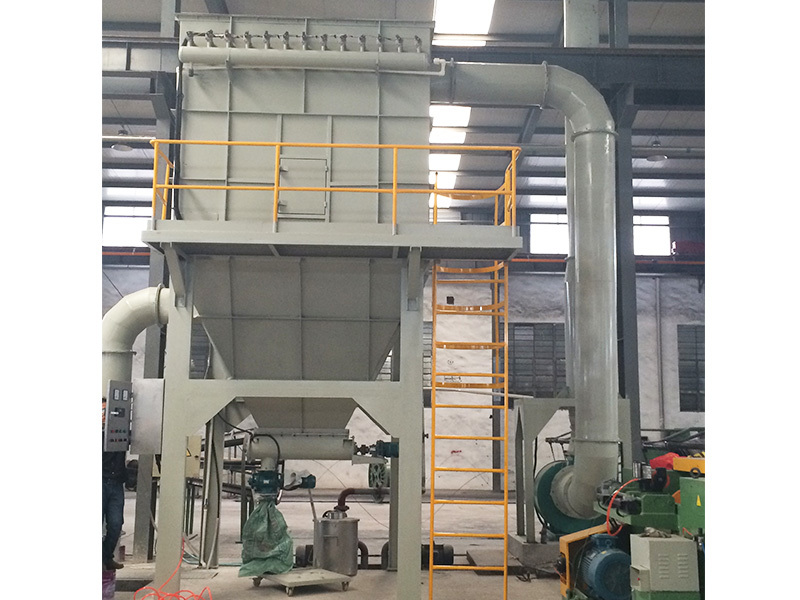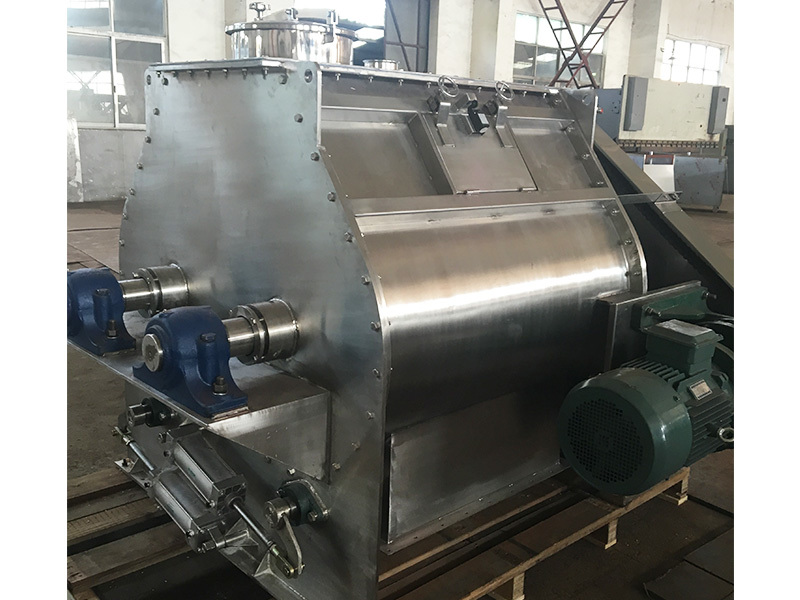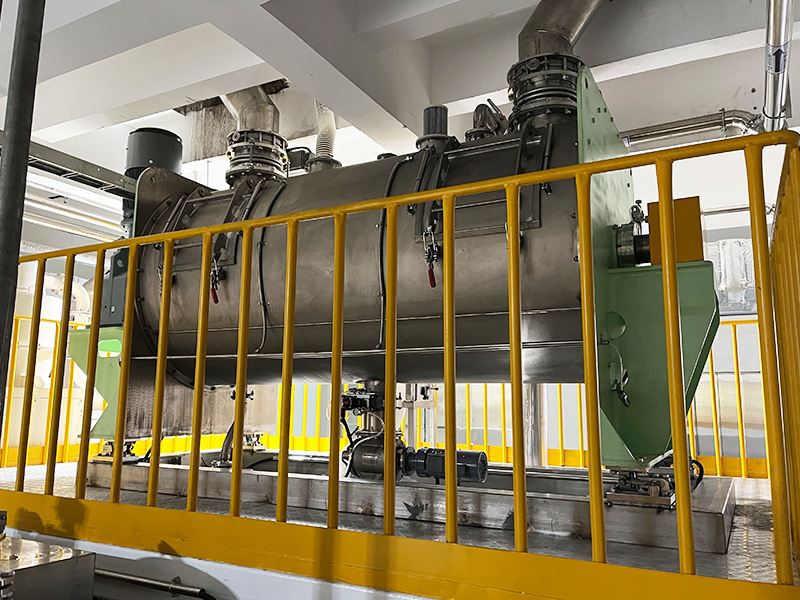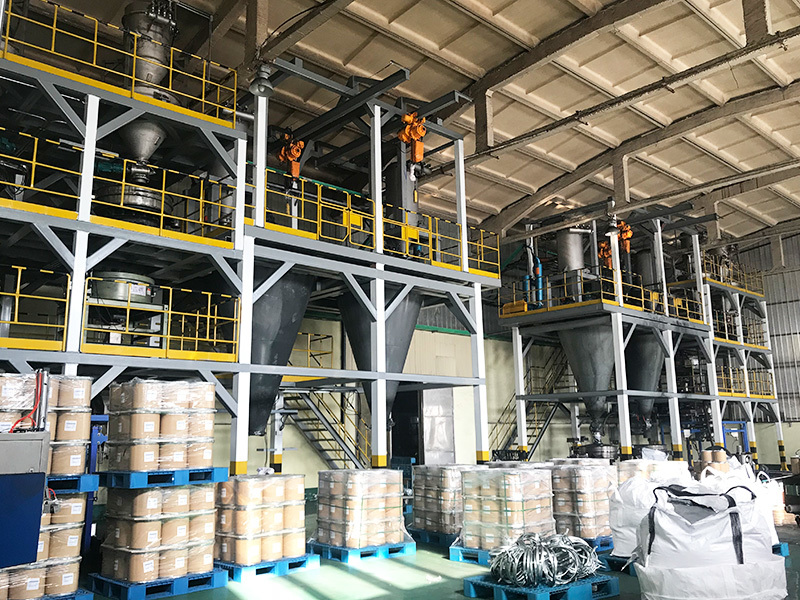
Internally heated composite fluidized bed
Category: Fluidized Bed Dryer Series
Overview
The internal heating fluidized bed drying technology is an advanced drying technology developed on the basis of ordinary fluidized bed drying and indirect conduction drying. The tube heat exchanger is built into the fluidized bed, and the fluidization technology is applied to strengthen the heat transfer between the solid particles and the heat medium, and the drying thermal efficiency and drying intensity of the dryer are improved.
Performance characteristics
Energy saving and high efficiency, because most of the heat is provided by the built-in heat exchanger with heat exchange efficiency of about 90%, hot air is mainly used as a power medium to ensure normal fluidization, which is greatly reduced compared with the amount of hot air required by regular fluidized bed dryers. Therefore, the system power consumption and exhaust heat loss are correspondingly reduced, and the drying efficiency is high.
Small footprint, less system investment.
Since the operating gas velocity of the internal heating fluidized bed system is lower than that of the regular fluidized bed, it can effectively reduce the material entrainment and leaching loss of the fluidized bed, correspondingly reduce the load of the dust removal system and reduce the pressure on environmental protection.
Special cloth wind plate is used to prevent material leakage.
Working principle
The wet material entering the fluidized bed contacts with the hot air above the air distribution plate, and the material particles are suspended in the air flow to form fluidization. The tubular heat exchanger is immersed in the fluidized material, the heat exchange heat pipe is filled with steam, and the heat required for material dehydration is provided by the tubular heat exchanger and the hot air for fluidization. The dried product is discharged from the discharge port of the fluidized bed, and the dust-containing gas is purified by the dust collector and discharged into the atmosphere by the induced draft fan.
Application
★The equipment is suitable: refined salt, ammonium chloride, granulated fertilizer, potassium carbonate, potassium chlorate, potassium phosphate, sodium sulfate, potassium chloride, potassium tartrate, calcium formate, calcium chloride, potassium nitrate, ABS plastic, acrylonitrile, butadiene, Soda ash, adipic acid, sodium percarbonate, sodium nitrate, polystyrene, ammonium nitrate, ammonium sulfate, calcium glucose, vitamins, urea, titanium dioxide, terephthalic acid, taric acid, sewage sludge, sodium bicarbonate, sodium bromide, sodium carbonate, sodium chloride, sodium formate, sodium ethylene, propylene, steel scrap, polyvinyl chloride, hydroquinone, calcium hypochlorite, calcium sulfate, cellulose derivatives, citric acid, copper sulfate, crystalline sugar, diammonium phosphate, heavy ash and other materials drying.
Technical parameters
| Model/Parameter | production capacity | dehydration capacity | Initial moisture | Final moisture |
| NXF20 | 20 | 4000 | 15~20 | ≤0.1 |
| NXF30 | 30 | 6000 | 15~20 | ≤0.1 |
| NXF40 | 40 | 8000 | 15~20 | ≤0.1 |
| NXF50 | 50 | 10000 | 15~20 | ≤0.1 |
| NXF70 | 70 | 14400 | 15~20 | ≤0.1 |
| NXF80 | 80 | 16400 | 15~20 | ≤0.1 |
| NXF90 | 90 | 18400 | 15~20 | ≤0.1 |
| Model/Parameter | fluidization area m | Installed power kw | Steam pressure Mpa | Steam consumption kg/h | Inlet air temperature | Overall dimension (LXWXH)mm | Floor space m |
| NXF2.0 | 2 | 50 | 0.2~1.0 | 400~1000 | 100~300 | 3000x1300x4500 | 45 |
| NXF2.5 | 2.5 | 65 | 600~1200 | 3500x1300x4500 | 55 | ||
| NXF3.0 | 3 | 85 | 1400~2200 | 3600x1400x4500 | 65 | ||
| NXF3.5 | 3.5 | 95 | 1000~2000 | 4000x1500x4500 | 80 | ||
| NXF4.0 | 4 | 110 | 1200~2000 | 4600x1600x5000 | 90 | ||
| NXF5.5 | 5.5 | 130 | 1400~2200 | 5000x1650x5000 | 100 | ||
| NXF6.0 | 6 | 140 | 1600~2800 | 6000x1700x5000 | 110 | ||
| NXF7.0 | 7 | 165 | 1800~3200 | 6600x1750x5000 | 120 | ||
| NXF8.0 | 8 | 170 | 2000~2800 | 7500x1800x5000 | 130 | ||
| NXF10 | 10 | 210 | 2400~3600 | 10000x1900x6500 | 140 | ||
| NXF15 | 15 | 300 | 3200~4400 | 15000x1900x6500 | 200 | ||
| NXF20 | 20 | 320 | 4000~6000 | 20000x2000x7000 | 240 |
Special drying/cooling equipment for refined salt-NXF type internal heating fluidized bed design basis
Design scale: 100000 tons, 150000 tons, 200000 tons, 300000 tons, 600000 tons
Design year running time: 8000h
Product Name: Sodium Chloride (NaCl)
Raw material initial moisture: surface water ≤ 2.5% Raw material temperature: 45 ℃
Average particle size of raw materials: 0.3-0.5mm particle size distribution: 0.3-0.5mm ≥ 90%
Exiting conditions: material moisture content 0.05%
discharge temperature 50 ℃
Utility Specifications
Saturated steam: pressure (MPaG) 0.8-1.0
Temperature (℃):175-184
Electricity: voltage: 380V/220V
Number of phases: 3/2
Frequency: 50±0.5Hz
Utilities Consumption of Drying System
According to the above raw material and product quality specifications, under the design scale conditions, the consumption design values of utilities are as follows: saturated steam 55-65 kg/t; Electricity 4-6KWh/t
Process characteristics
The principle of fluidization is used to dry the refined salt.
Fluidized drying ensures that the thickness and residence time of the material can be adjusted within the design range, so the quality of the material is guaranteed.
Fluidized drying due to the existence of fluidizing wind, so improve the material for buried pipe bonding, equipment can be stable operation.
Fluidized drying has large operating elasticity and can run stably under 0-100% load, which is convenient for operation.
The main equipment of fluidized drying is static equipment, and only the fan and part of the conveying equipment in the whole process are operating equipment, so the maintenance of the equipment is greatly reduced and the maintenance cost is saved.
Advantages
The fluidized bed structure of the built-in heat exchange device is adopted, and the height of the fluidized section reaches about 1000mm. This structure has the following advantages:
Due to the structure of the built-in heat exchange device, most of the heat required for drying the material is provided by the built-in heat exchange device, which can greatly reduce the fluidization area of the equipment.
Due to the small fluidization area of the equipment, the required fluidization air volume is greatly reduced, the volume of the cyclone dust collector and the wet dust collector equipment is small, the wind pipe is small, and the overall volume of the equipment is small.
Due to the small overall size of the equipment, the overall footprint is small, and the plant and civil construction investment are small.
Due to the small size of the equipment, the overall investment in the equipment is low.
Previous Page
Next Page



